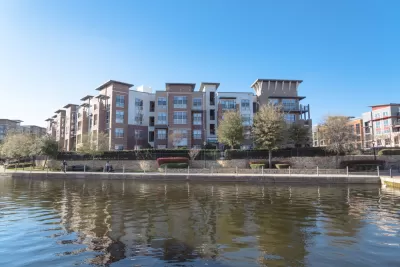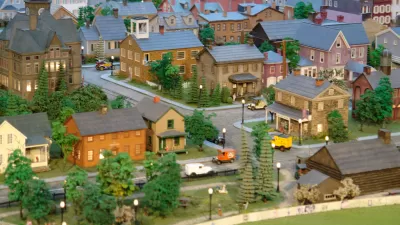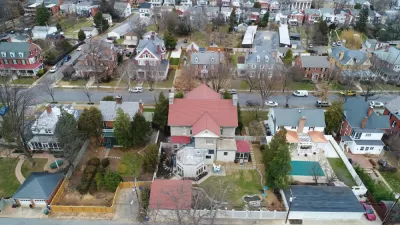In a new book, Hans Westlund and Tigran Haas argue that the global knowledge economy is radically reshaping urban development. Eventually, they say, it'll render meaningless our present notions of "urban," "suburban," and "rural."

Heralding the arrival of a new urban development paradigm, Hans Westlund and Tigran Haas' book In The Post-Urban World makes the case that "multifunctional city regions" connected in "global city networks" constitute the world's urban future.
The term "urban" itself, they argue, will become less meaningful as the global knowledge economy gathers human capital into dense regional amalgamations. That densification will blur the line between urban and suburban as multifamily becomes the norm in places previously restricted to single family dwellings. Transportation and telecommunications will increasingly facilitate those ends.
In such a future, Westlund and Haas see smaller cities and rural settlements fading away unless they're integrated into wider city regions. "The more peripheral cities, towns and rural areas suffer of lack of sufficient concentrations of the now most important production factor, human capital, which means that their labor markets remain small and the knowledge economy has difficulties to develop there."
FULL STORY: A New Perspective on Urban Development

Study: Maui’s Plan to Convert Vacation Rentals to Long-Term Housing Could Cause Nearly $1 Billion Economic Loss
The plan would reduce visitor accommodation by 25,% resulting in 1,900 jobs lost.

North Texas Transit Leaders Tout Benefits of TOD for Growing Region
At a summit focused on transit-oriented development, policymakers discussed how North Texas’ expanded light rail system can serve as a tool for economic growth.

Why Should We Subsidize Public Transportation?
Many public transit agencies face financial stress due to rising costs, declining fare revenue, and declining subsidies. Transit advocates must provide a strong business case for increasing public transit funding.

How to Make US Trains Faster
Changes to boarding platforms and a switch to electric trains could improve U.S. passenger rail service without the added cost of high-speed rail.

Columbia’s Revitalized ‘Loop’ Is a Hub for Local Entrepreneurs
A focus on small businesses is helping a commercial corridor in Columbia, Missouri thrive.

Invasive Insect Threatens Minnesota’s Ash Forests
The Emerald Ash Borer is a rapidly spreading invasive pest threatening Minnesota’s ash trees, and homeowners are encouraged to plant diverse replacement species, avoid moving ash firewood, and monitor for signs of infestation.
Urban Design for Planners 1: Software Tools
This six-course series explores essential urban design concepts using open source software and equips planners with the tools they need to participate fully in the urban design process.
Planning for Universal Design
Learn the tools for implementing Universal Design in planning regulations.
City of Santa Clarita
Ascent Environmental
Institute for Housing and Urban Development Studies (IHS)
City of Grandview
Harvard GSD Executive Education
Toledo-Lucas County Plan Commissions
Salt Lake City
NYU Wagner Graduate School of Public Service





























